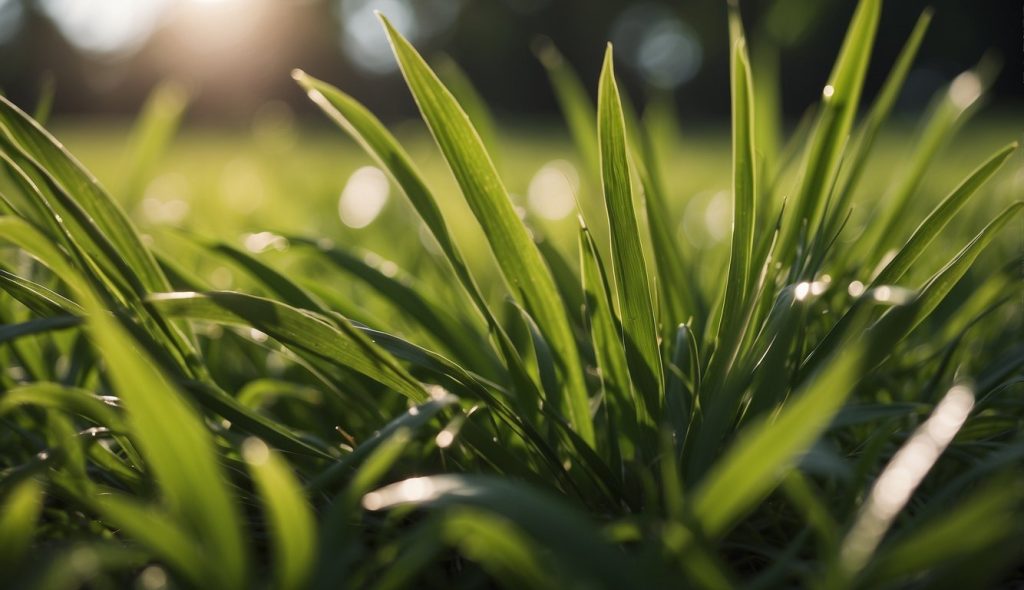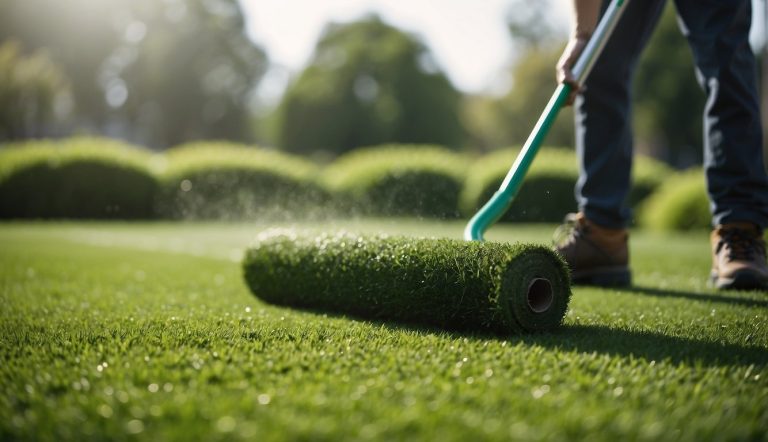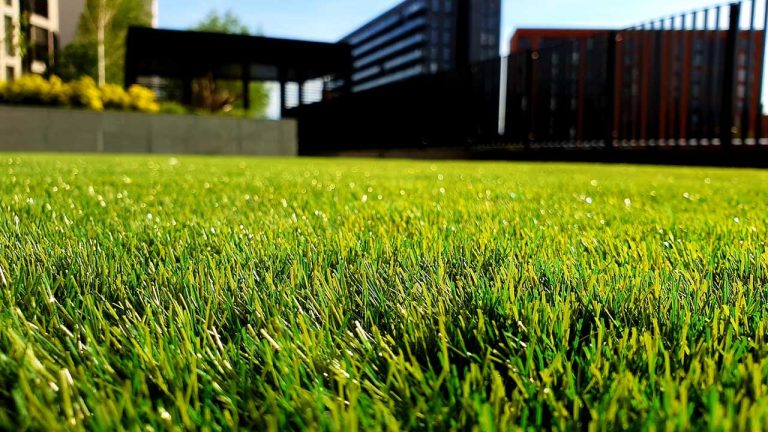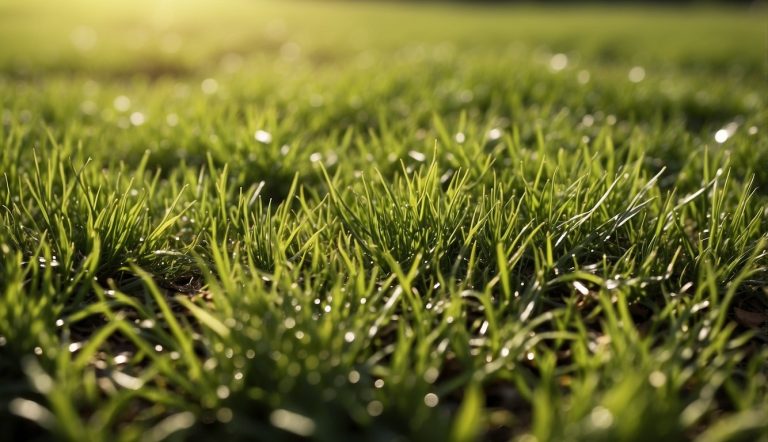How Do You Grow Grass in the Shade? Tips for a Lush Lawn Even in Low Light!
Growing grass in shaded areas can be a challenging endeavor, due to the reduced sunlight that is crucial for photosynthesis. However, with the right approach, it’s possible to cultivate a lush, green lawn even under the canopy of trees or in the shadow of buildings.
The first step is to choose the right type of grass. Different grass species have varying levels of shade tolerance; cool-season grasses generally fare better in shaded conditions compared to warm-season varieties.
It’s also important to understand that even the most shade-tolerant grasses still require some light, so completely shaded areas may need alternative ground cover.

In addition to selecting the appropriate grass type, preparing and maintaining the soil properly in shaded areas is paramount. Soil in shaded areas tends to be cooler and may retain moisture for longer periods, which can lead to issues with root development and increase the potential for disease.
Regular aeration and careful attention to watering practices can mitigate such challenges.
The soil should also be tested and amended as needed to provide the best possible growing conditions for your grass.
When planting grass in shade, strategies like overseeding can help establish a dense lawn. Since the grass has less energy due to lower light levels, it tends to be less competitive with weeds and may thin out over time. Overseeding with a shade-tolerant grass blend can ensure the lawn remains full and healthy.
Additionally, taking proper care of a shady lawn—such as mowing at the correct height, providing appropriate fertilization, and controlling foot traffic—can encourage the grass to thrive despite the challenges posed by reduced sunlight.
Key Points…
- Selecting shade-tolerant grass and ensuring some light reaches the area is crucial.
- Soil maintenance, including aeration and moisture control, helps grass growth in shade.
- Adopting correct planting and lawn care techniques can mitigate the challenges of shade.
Table of Contents
Different Grass Types and Their Shade Tolerance
When I’m planning a lush lawn in shaded areas, I consider the grass’s shade tolerance foremost. Various grass types have adapted to lower light conditions, allowing them to thrive where sunshine is a premium. Here’s what I’ve found about some common grass species’ shade tolerance:
- Fine Fescues: These are my go-to for heavily shaded lawns. They have fine blades and tolerate shade well. Varieties like creeping red, chewings, hard, and sheep fescue offer good options.
- St. Augustine Grass: This is a warm-season grass great for partial shade. It needs some sunlight but can put up with moderate shade levels. St. Augustine has a broad blade and a rich green color, making it popular in subtropical regions.
- Tall Fescue: A cool-season grass that tolerates some shade, tall fescue has deep roots and a coarse texture. It’s often mixed with other grasses to enhance a lawn’s overall shade resistance.
- Zoysia Grass: This warm-season turf is more shade-tolerant than Bermuda grass, making it my choice in semi-shaded lawns that receive a few hours of sun each day. Zoysia is known for its ability to withstand foot traffic and heat, along with shade.
Here is a quick reference table summarizing shade tolerance:
| Grass Type | Shade Tolerance | Blade Texture | Additional Notes |
|---|---|---|---|
| Fine Fescues | High | Fine | Best for heavy shade |
| St. Augustine | Moderate | Broad | Needs some sunlight, works well in warm climates |
| Tall Fescue | Moderate | Coarse | Deep-rooted, often mixed with other types |
| Zoysia Grass | Moderate to Good | Fine to Medium | Good traffic tolerance, prefers a few hours of sun |
Remember, even shade-tolerant grasses need proper maintenance, including adequate water, nutrients, and the right mowing height to flourish in the shade.
Soil Preparation and Maintenance in Shady Areas
Growing grass in shady areas requires specific attention to soil preparation and maintenance. I’m going to share how I ensure that the soil in these challenging spots is ideally prepped and maintained to foster healthy turfgrass growth.
Conducting a Soil Test
Before I do anything, I conduct a soil test to determine the nutrient levels and pH of my lawn’s soil. This reveals if I need to add lime to correct acidity or apply certain nutrients that my grass might be craving. A typical soil test will measure the soil’s pH and levels of key nutrients like nitrogen, phosphorus, and potassium.
- pH Level: Grass in the shade prefers a pH that is slightly acidic to neutral (about 6.0 to 7.0).
- Nutrient Levels:
- Nitrogen (N): Crucial for leaf growth and green color.
- Phosphorus (P): Important for root development.
- Potassium (K): Enhances the overall resilience of the grass.
Improving Soil Quality and Nutrient Levels
Once I’ve completed the soil test, my next steps involve improving soil quality and nutrient levels:
- Aerating: I carefully aerate the soil to alleviate any compacted soil, making sure not to damage tree roots if they’re present.
- Fertilizer: Based on the soil test results, I apply a fertilizer formulated for shade-tolerant grass, rich in the nutrients that were deficient.
- Adding Organic Matter: I boost the soil’s fertility and structure by mixing in organic matter, like compost, which provides a slow release of nutrients.
- Mulching: To retain moisture and protect from temperature extremes, I use a thin layer of mulch which also breaks down over time to add nutrients back into the soil.
- Watering: Since shaded areas tend to retain water longer, I carefully monitor my watering schedule to ensure there’s enough moisture without oversaturating the soil.
By diligently following these steps and conducting periodic maintenance, I keep the soil in my lawn’s shady spots in top condition, which in turn helps my grass thrive even with less sunlight.
Planting and Overseeding Strategies
When it comes to maximizing turf growth in shaded areas, the success lies in selecting appropriate grass varieties and employing effective overseeding methods. Let’s dive into how I can ensure my grass thrives, even with less light.
Choosing the Right Grass Seed
In my experience, the key to a lush, green lawn and athletic fields in shaded conditions begins with selecting the correct type of grass seed. Shade-tolerant grass seed blends are available, typically comprising fine fescues and shade-adapted varieties of Kentucky bluegrass which can perform better in lower light.
I’ve found that grass seed specifically labeled for shade usually has a mix of:
- Fine Fescues: Known for their ability to grow in less sunlight.
- Shade-Tolerant Kentucky Bluegrass: Provides a dense, vigorous lawn that can endure moderate shade.
It’s important to read the seed package to ensure that the blend is suitable for the specific shade conditions of my yard.
Effective Overseeding Methods
Overseeding refers to the planting of grass seed directly into existing turf, without tearing up the turf or the soil. It’s a great strategy I use for enhancing lawn density, especially in shaded areas where the grass tends to be thinner. Here’s my method:
- Mow the existing lawn to a low height and rake thoroughly to remove thatch and debris.
- Choose a high-quality shade-loving perennial grass seed suitable for the existing lawn conditions.
- Use a spreader to evenly apply the grass seed over the desired area, ensuring good seed-to-soil contact.
- Water the overseeded area gently and frequently to maintain a moist seedbed until germination occurs.
By focusing on these strategies, I’ve found that my chances of cultivating a resilient and attractive shade-friendly turf are significantly increased.
Proper Care for Shady Lawns
Maintaining a lush lawn in shaded areas involves specific practices to ensure the grass receives the care it requires to thrive under these unique conditions.
Mowing and Watering Guidelines
When I mow my shady lawn, I keep the mowing height slightly higher than in sunlit areas. This allows the grass blades to undergo more photosynthesis due to a larger surface area, which is crucial for their health in low-light conditions. A typical mowing height for shady areas might be about 3 to 3.5 inches.
For watering, shaded lawns require less frequent watering because of reduced evaporation rates. It’s essential to monitor the moisture levels closely and water only when necessary.
Overwatering can lead to a shallow root system and increase the susceptibility of the lawn to diseases. Generally, providing about 1 inch of water per week, either from rainfall or supplemental watering, is sufficient for most lawns, but this can vary based on soil type and local conditions.
Fertilization and Weed Control
When fertilizing a lawn in the shade, it’s imperative to go light on fertilization. I’ve found that applying a slow-release, nitrogen-rich fertilizer once in the spring and then again in the fall supports steady growth without overwhelming the grass with excess nutrients that can’t be absorbed in low light.
Weed control is another critical aspect of shady lawn care. Shade-tolerant weeds can often outcompete grass, so applying a herbicide made for shady areas can be beneficial.
It’s important to choose a product that won’t harm the grass and to apply it following the manufacturer’s directions to effectively target weeds without causing damage to the lawn.
Additional Considerations for Optimal Growth

In my experience, ensuring your shade-covered grass thrives involves more than just regular maintenance. It’s crucial to look at the environment and make specific adjustments that could provide better light and growing conditions for grass.
Managing Tree Canopy and Pruning
When it comes to trees casting shadows over my lawn, I’ve found that thinning the canopy can significantly improve sunlight penetration. By selectively pruning dense limbs, more light filters through, which is essential for grass growth.
I usually recommend calling in a certified arborist for the job to ensure it’s done safely and effectively. They’re adept at determining which branches to remove to achieve the desired light conditions without compromising the tree’s health.
Regular pruning doesn’t just help with light. It also reduces the abundance of moss which often competes with grass in shaded areas. Thinner canopies lead to drier and brighter conditions that are less favorable for moss growth.
Alternative Solutions in Deep Shade
If there are areas under deep shade where grass struggles, no matter what, I look for alternative solutions. Sometimes, the realistic approach is to acknowledge where grass might not thrive and consider other options.
Shade-tolerant ground covers like English ivy, hostas, and coleus can transform these problematic zones into attractive landscape features.
Here’s a simple list I put together for ground cover that fares well in shaded areas:
- English ivy: Hardy and evergreen, offering lush coverage.
- Hostas: Variety of sizes and colors; they thrive in shade.
- Coleus: Known for vibrant foliage, adding a pop of color where grass might not grow.
Additionally, installing stepping stones amidst these ground covers provides a functional and visually appealing pathway, ensuring that beauty and utility go hand-in-hand even in the challenging areas of your garden.
Frequently Asked Questions
When working with shaded lawns, I often get asked about how to successfully grow grass. The key is choosing the right grass for your region’s light levels and soil conditions.
What is the best type of grass for shaded areas in the southern region?
In the southern region, St. Augustine grass is my go-to choice for shady areas. It has higher shade tolerance compared to other warm-season grasses that thrive in southern climates.
Which grass seed is most suitable for densely shaded lawns?
For densely shaded lawns, fine fescues are typically the most suitable. They have the ability to thrive in low-light conditions, making them an optimal choice for heavy shade.
Can Zoysia grass seed thrive in shaded parts of the yard?
Yes, Zoysia grass can grow in some shade, but it prefers sunlight. It will survive in partial shade, but for best results, it should receive at least a few hours of sun each day.
What solutions exist for growing grass in shaded areas with poor soil quality?
To grow grass in shaded areas with poor soil quality, I recommend improving soil fertility through the addition of organic matter, like compost, and performing regular aeration.
How long will it typically take for grass seed to fully establish in shaded locations?
Grass seed in shaded locations typically takes longer to establish compared to full-sun areas. On average, expect it to take a few weeks longer, but with proper care, it should establish within 3-4 months.
Are there alternative plants that are recommended for garden areas where grass struggles to grow due to shade?
Yes, in garden areas with heavy shade where grass struggles, consider planting shade-tolerant groundcovers such as Pachysandra or English Ivy. These require less maintenance and can provide an attractive, green landscape.







